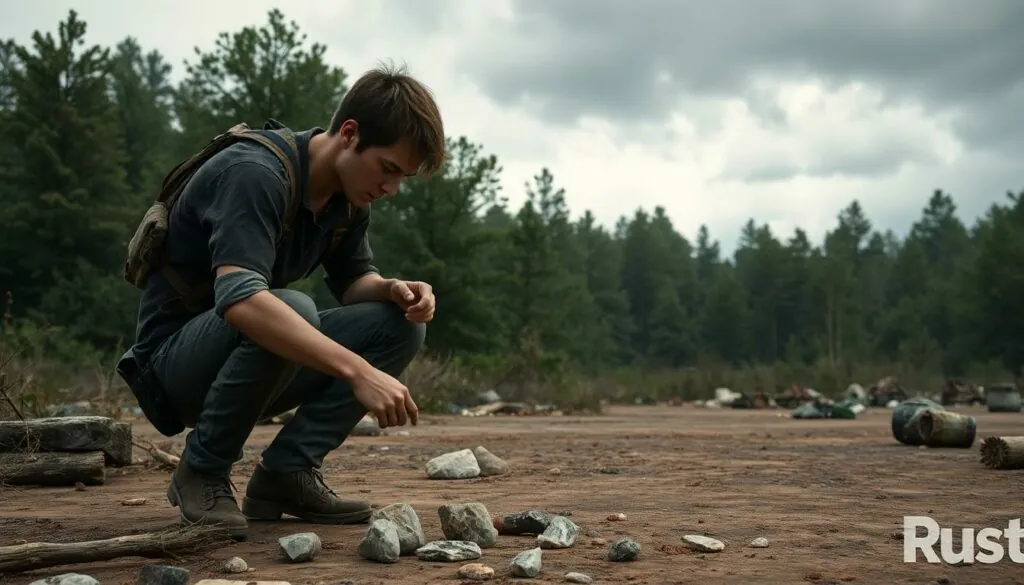In a world where survival games often mean battling hordes of players and unpredictable alliances, imagine diving into the wilds of Rust all on your own. That’s right—single player Rust is here to turn your solo survival dreams into a reality. Forget about dodging bullets and forming temporary friendships; it’s just you against the elements, crafting your way to glory—or, at least, a cozy little shack.
Table of Contents
ToggleOverview of Single Player Rust
Single player mode in Rust delivers a distinct survival experience. Players navigate a vast, open world filled with environmental challenges. Survival focuses not on competing against others, but rather on mastering the elements.
Exploration becomes a personal journey, where players gather resources and uncover secrets of the landscape. Crafting tools and building shelters represents essential gameplay mechanics. Players can spend hours refining their base, ensuring optimal protection and comfort. Each created item serves a purpose, enhancing gameplay depth.
Environmental threats, such as wildlife and hazardous weather, keep players on their toes. Understanding these dangers increases chances of survival. Strategies for resource management become vital, with players learning to utilize every collected item effectively.
Completing tasks, from hunting to crafting, leads to a sense of accomplishment. Single player Rust does more than challenge; it offers opportunities for creative play. Every session invites innovation, allowing players to design unique structures that reflect their style.
Additionally, players experience the storyline through NPC interactions scattered throughout the world. These characters provide quests and lore, enriching the gameplay experience. Engaging with them allows for a deeper understanding of Rust’s universe.
Overall, single player mode caters to those seeking solitude while honing survival skills. Each moment spent in this mode adds layers to the gameplay experience, emphasizing personal achievement and exploration.
Gameplay Mechanics
Gameplay mechanics in single player Rust focus on exploration, crafting, and survival, providing players a unique and immersive experience.
Building and Crafting
Crafting forms the backbone of gameplay in single player Rust. Players gather resources like wood and stone to create tools, weapons, and structures. Building offers creative freedom, allowing for customizable shelters that reflect individual styles. Engaging in crafting recipes unlocks advanced items, enhancing self-sufficiency. Upgrading bases for increased protection against threats becomes a priority. Each unique creation not only serves a functional purpose but also provides a satisfying sense of accomplishment.
Survival Elements
Survival elements challenge players in this immersive environment. Harsh weather conditions and wildlife create ongoing threats that demand strategic resource management. Players must monitor health and hunger levels, ensuring they have sufficient food and water. Hunting and foraging become essential skills for sustaining life. NPC interactions add depth through quests that offer rewards, enhancing the overall survival experience. Mastering these elements paves the way for success in a world that constantly tests one’s survival skills.
Graphics and Sound Design
Rust delivers striking visuals that enhance the single player experience. Diverse landscapes, ranging from forests to deserts, showcase detailed textures and dynamic lighting. Subtle changes in the environment, such as weather effects and time of day, create a rich atmosphere that immerses players in survival.
Animations appear fluid, bringing a sense of realism to character movements and interactions. Players notice the difference during crafting, as building processes unfold seamlessly. Every crafted item features unique designs, contributing to individual player styles.
Sound design plays a crucial role in gameplay. Environmental sounds, such as rustling leaves and distant wildlife, heighten awareness and amplify immersion. Players can identify threats, like nearby animals or raiders, through subtle audio cues. Background music creates an emotional backdrop, enhancing moments of tension and tranquility.
Technology also enhances the overall experience. Support for high-resolution settings ensures crisp graphics, while a consistent frame rate maintains smooth gameplay. Utilizing advanced shaders and post-processing effects, Rust stands out visually.
Quality audio effects complement the immersive graphics. Players can distinguish between different types of tools and weapons based on sound alone. Engaging soundscapes contribute significantly to building a captivating survival atmosphere.
Overall, both graphics and sound design play essential roles in crafting a compelling single player experience. The attention to detail in visual fidelity and auditory immersion allows players to fully engage in their quest for survival, making every moment memorable.
Comparison to Multiplayer Mode
Single player mode in Rust offers an experience characterized by self-reliance and individual exploration. Players operate without the pressure of competing against others, allowing them to focus on environmental challenges. Instead of forming alliances or engaging in player conflicts, they spend their time navigating vast landscapes filled with diverse resources.
Crafting becomes a personal journey. While multiplayer may encourage collaboration in resource gathering, single player gameplay emphasizes individual creativity with items and structures. Unique bases reflect each player’s style, showcasing hours of effort in refinement and design. Building personal shelters not only serves a functional purpose but also represents growth and achievement.
Gameplay mechanics in single player prioritize survival strategies, with players managing health, hunger, and environmental threats. They connect with their surroundings through hunting and foraging, further deepening the immersive experience. Multiplayer mode often involves chaotic interactions with others, while single player focuses on mastering the harsh elements of the game.
In terms of graphics and sound design, both modes deliver high-quality experiences. Striking visuals and immersive audio encompass every moment, but single player engages players in a more contemplative manner. Background music shifts with tension and tranquility, enhancing the solitary experience.
Overall, navigating the single player mode presents challenges distinct from multiplayer interactions. Mastery of survival skills becomes a solitary endeavor, offering satisfaction that differs from shared accomplishments in multiplayer. Players embracing this mode can appreciate the detailed graphics and sound while fully immersing themselves in the rich landscape of Rust.
Tips for New Players
Starting in single player Rust presents unique challenges and opportunities. Familiarize yourself with the environment immediately. Gathering resources like wood and stone should become a priority early in the game, as these materials form the foundation for crafting tools and building structures.
Utilize crafting recipes to unlock advanced items. Creating basic tools can streamline resource gathering and enhance efficiency in your survival efforts. Focus on upgrading your shelter, as a fortified base provides crucial protection against environmental threats and wildlife.
Managing health and hunger is vital for survival. Collect food and water regularly, making hunting and foraging essential skills. Engaging with NPCs can yield helpful quests that offer rewards, contributing to resource accumulation.
Exploration enhances the gaming experience. Venture out into diverse landscapes to uncover hidden secrets and gather rare materials. Each new area has unique resources that can improve crafting options and bolster your survival chances.
Monitor weather conditions closely. Adverse weather can pose significant risks, so prepare your character accordingly with appropriate clothing and shelter. Having a strategy for dealing with environmental challenges greatly increases your chances of success.
Lastly, take the time to enjoy the game’s graphics and sound design. The striking visuals and immersive audio create a captivating atmosphere that complements gameplay. Engaging with these elements enhances the overall experience, making each moment spent in Rust more memorable.
Conclusion
Single player Rust offers a unique and immersive experience that allows players to focus on survival and creativity. Without the distractions of competing against others, players can fully engage with the environment and hone their skills. The combination of crafting, exploration, and environmental challenges creates a rewarding journey where personal achievements shine.
The stunning graphics and sound design further enhance this solitary adventure, making every moment memorable. Players can take pride in their unique creations while navigating the vast landscapes. Embracing the challenges of single player mode not only fosters self-reliance but also deepens the connection to the game’s rich world. For those seeking a fulfilling solo experience, single player Rust stands out as a compelling choice.




